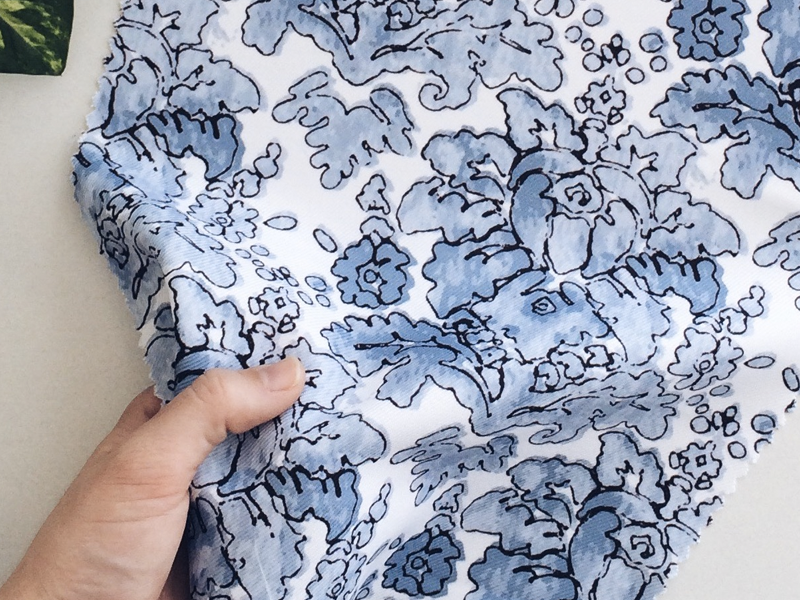Ever wonder what those tags mean when you’re browsing our Design Library? What is ‘Toile,’ and where exactly did it come from? Our in-house textile designers are here to help. Using their wealth of industry knowledge, we created the Textile Design Guide blog series. Each week, we’ll offer a brief history and definition for a handful of fabric motifs, styles, and designs – aka, our design tags!
We are kicking off the series with some classic woven and handicraft techniques that have been reinterpreted for the digital age: damask, embroidery, and toile.
Damask
The term damask technically refers to a type of woven fabric featuring a glossy design formed against a matte background. Traditionally these fabrics were monochromatic, with the pattern created through the appearance of contrasting woven sheens. Today, many damasks use multiple tones.

An example of a Chinese damask pattern
While damasks are believed to have originated in China, they are named after the historic textile industry in the Syrian city of Damascus. Brought to Europe by the Crusaders in the 11th century, the early hand-woven silk damasks were an in-demand luxury good. The invention of the Jacquard loom helped bring these fabrics to the masses.
Today, damasks are most commonly associated with an ornate style of pattern that includes botanical and animal elements in a mirrored scroll motif. Often seen in traditional interior design, damask fabrics offer an elegant and stately feel to a room. The introduction of digital printing allows this old-world design to be recolored in fresh, modern ways.
Shop our damask designs here.
Embroidery
Remember watching your grandmother embroider flowers onto handkerchieves? The needle rising and falling through the fabric in neat little stitches creates a raised artwork on the surface of the cloth. This technique has been incorporated into interior fabrics for centuries. In the past, embroidered fabrics were predominately hand crafted, making them expensive and time consuming to create. With the advent of manufactured embroidery, most household budgets could accommodate a few pieces here and there.
Today, artists have managed to create a “stitched” look in digital artwork, giving new dimension to the embroidered look. With the depth of detail achieved in digital printing, faux embroidery is easy to create and looks great: the shades, tones, and textures of the design come through in the print.
Below are some of our favorite embroidery designs; you can shop our entire selection here.
Toile
Toile is one of our all-time favorites. We can’t resist the rich detail and monochromatic style of these fabulous designs. Originating from the town of Toile, France in the 1760’s, it has become a long-time staple in interior decorating and design.

A toile print from the 1920s depicting an air balloon flight. From the New York Public Library.
Toile fabrics traditionally depict peaceful pastoral scenes in detail. These fabrics exude a very traditional feel, channeling the English or French countryside. Today, textile artists are creating toile designs depicting everything from pop culture icons to modern cityscapes.
We love the modern interpretations of toile found in our Library. Want even more? Shop our entire selection here.
Be sure and check back next week for the latest installment of our Textile Design Guide!












Leave A Comment